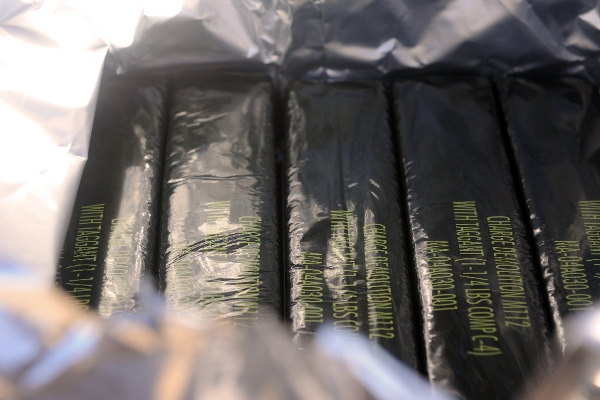New Delhi: Scientists from Centre for Nano and Soft Matter Sciences (CeNS), Bengaluru, an autonomous science & technology institute under the Department of Science & Technology, have developed an easy-to-handle, compact sensor for trace-level detection of explosives and toxic metal salts.
The device, which was developed by CV Yelamaggad and his group from CeNS, is capable of detecting explosives such as TNP, TNT, and RDX. It works on a simple visual detection technique.
The device employs a fluorescent material known as coordination polymer (COP), a hybrid system originating from the interaction between organic and inorganic moieties. This system being electron rich acts as an electron source. The explosive materials containing nitro groups are electron-deficient and act as an electron sink.
A charge-transfer complex or an association of two or more molecules is formed between these electron sources and sink that is non-fluorescent, and hence the intensity of the fluorescence decreases drastically, which can be observed visually. The sensing can be done in solution as well in thin-film forms at very minute part per billion (ppb) concentrations.
Currently, there are many different devices that are being used for the sensing of explosive materials, but they suffer from major drawbacks such as large size, the need for repeated calibration, and so on. The device developed by Yelamaggad and his group can be comfortably transported and used in various places such as airports, rail stations, and shopping complexes owing to its compact size and ease of handling. The simple visual detection technique makes it compatible to be used without calibration.
The handheld sensor efficiently detecting and quantifying hazardous and dangerous explosives can go a long way in making the world a safe place and minimising explosions and ill effects of the toxic materials.
A prototype of the device was demonstrated at the Bengaluru India Nano-2018 Expo under a collaborative project with Tata Steel.
Source: Vigyan Prasar
Image Courtesy: TechLink
You may also like
-
New Heat-Based Approach To Cancer Treatment Can Reduce Chemotherapy Doses
-
Scientists Take A Major Step Towards Unification Of Classical & Quantum Gravity
-
India Graphene Engineering and Innovation Centre (IGEIC) Under the Vision of Viksit Bharat@2047 Launched
-
New High-Performance Gas Sensor can Monitor Low Level Nitrogen Oxides Pollution
-
Antidepressant Drug can be Repurposed for Treating Breast Cancer
